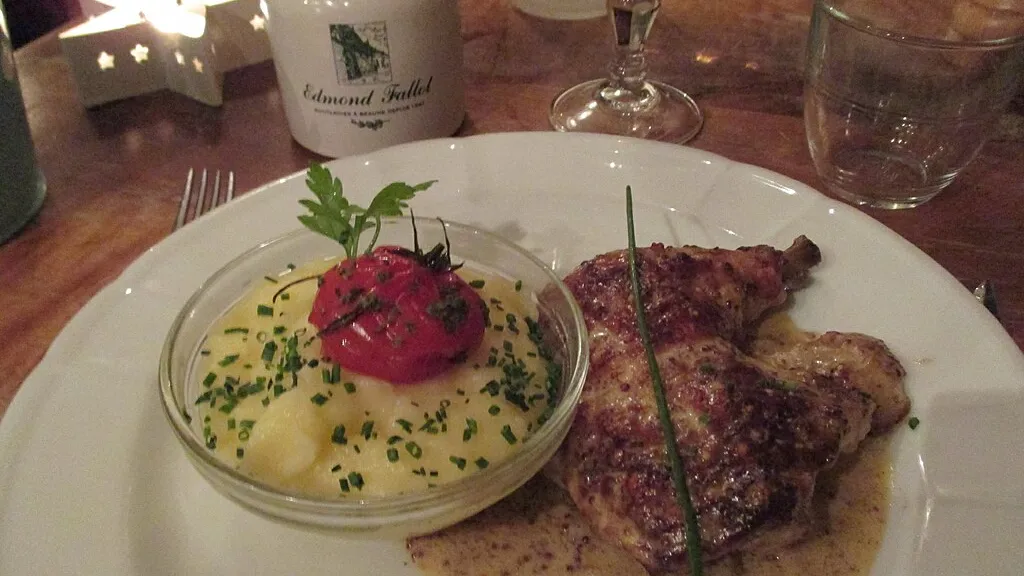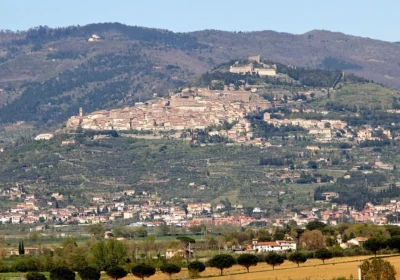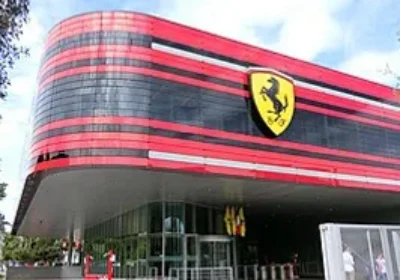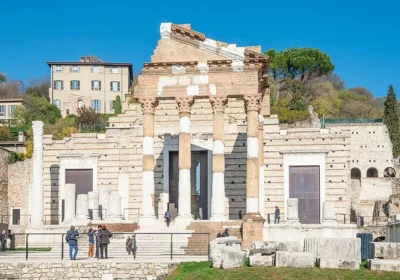Traveling through magical Burgundy, famous for its architectural masterpieces, castles, wine cellars and fabulous landscapes, will give you a chance to unlock the secrets of France and even the whole of Europe. After all, Burgundy once encompassed modern-day Belgium, Holland and Luxembourg.
So, getting to know even in passing the vast European heritage, taking a drive through the picturesque places of Burgundy, you will be imbued with its charm and culture. Exquisite gastronomy and entertaining stories will be additional attributes of a great vacation. After all, this is a country of great taste, where life itself is an art form. Nowhere are simple things like food and drink taken so seriously.
It is obvious that in Burgundy wines were and still are in the foreground. And it is absolutely logical that tourists in Burgundy are offered to get acquainted with the sights of this region through the “wine road”.
However, can anyone be surprised that passing along the road of “great wines”, you get both in a wine estate, and in a cheese atelier, and gastronomic restaurant, at the same time visiting architectural monuments and museums. Perhaps, such a road can be called “the way for great gourmets and aesthetes”.
Well, the second place in Burgundy is rightfully occupied by cheese, do not deny yourself the pleasure to try this delicacy, despite the “perfume”. The French say that as a person the products have their own individual smell, which expresses its essence and character. So here tastes converge on character and temperament. France without cheese is, as the French themselves say, “a car without a driver”, and wine is its Soul.
In general, the “wine road” is more than 200 kilometers. You can go straight, or you can go as winding as you like, in any case the road leads you to the most beautiful and interesting places.
Your choice is always yours: energetic and vigorous, relaxed and at a strolling pace, you are on your way to learn “the art of living in French”.
In the very south of Burgundy lies a historic region called Beaujolais. The medieval image of the villages can be recognized from afar by the castle towers or church bell towers. In this fairy-tale land there is no measurement of time, it has dissolved in harmony and peace, children’s dreams of the beautiful far away have come to life. You can tell the time by the sun, and the season by the color of the leaves, but the year is more likely to be known by the wine label, as the local wine is usually drunk fresh and young.
However, along with the sensational Beaujolais nouveau, the real vintage wines of this country are also appreciated by lovers from all over the world.
On the way we stop at one of the wine estates. Or rather, palaces – Taizé. A provincial Versailles with a French park. One of the largest wine estates in Beaujolais – 97 hectares and many awards for wine production. The chateau, like the park, was designed by royal architects and gardeners in the 17th century. The nearby wine cellar impresses with its vaulted ceiling and cool stone walls, it is also the largest wine storage facility in Beaujolais. The wine, which is not typical of the region as it requires a long aging period, matures here in huge barrels and can be stored for more than 20 years.
Everywhere you can feel the respect for the land, the family’s past and the traditions of the winemakers, everything that the aristocratic family never neglected, but on the contrary carefully preserved and multiplied, improving the quality of the wine, the creation of which has become a high art in Beaujolais.
The next stop is the village of Jarnioux, set in a valley of three rivulets that in the past were used for water mills. The centerpiece, as in many other Beaujolais villages, is the architectural ensemble of the medieval castle, whose towers with shining tiles create a dominant note in such a romantic image.
Another attraction in Beaujolais is the village of Oignt. Perched on a hilltop, it has fully retained its medieval image. Ribboned streets are lined with golden stone houses. Cellars of winemakers, ateliers of artisans, a restaurant with panoramic terrace, everything for peace and inspiration. Magnificent views of the Alpine mountains, river valleys, hills embraced by vineyards unfold before you… Ah, why am I not a painter, the question involuntarily arises.
Now we can talk about the mundane, the cuisine….
The French food paradox can be experienced everywhere. The fame of culinary artists is based on excellent cooking from quality products, and on the result of their high skill. Eating to your heart’s content, drinking plenty of wine, you will find that you do not get drunk and do not gain weight, and after all, French cuisine can not be called “lean”.
It is not for nothing that French gastronomy enjoys success all over the world, driving mad both mere mortals and …
Nourishing, aesthetic, French cuisine remains easy and refined even for novice cooks.
Few people know that France’s illustrious gastronomy grew out of the family cuisine of Burgundy. A bold statement, you may say, but judge for yourself:
Burgundy is where one of the oldest cookbooks was created back in the day, by François Pierre La Varenne (1618-1678). He was the first to decide not to use exotic spices, which interrupted the flavor of any consumed product. They were terribly expensive, so only the elite could afford them. For this reason, delicious food with spices was only on the table of the rich.
Burgundian La Varenne replaced spices with available local seasonings: dill, parsley, bay leaf, tarragon, chervil openwork. The cook’s principle is more than revolutionary: “If I eat cabbage soup, I have to taste it.” Vegetables such as cauliflower, asparagus, green peas, cucumber and artichoke were proposed by him for the first time for food. Most importantly, aesthetic requirements for the food served were introduced. Previously, the natural shape and color of foods were hidden in cooking, now it was worthy of attention. All to preserve natural beauty.
The natural richness was brought to a refinement by culinary artists with good taste, and what today is called great French gastronomy would not have been so if Burgundy had not invented SOUSES. Where would modern gastronomy be without sauce?
So typically French is actually Burgundian. The use of wine, which has been produced in Burgundy since time immemorial, can also serve as proof. In the preparation of dishes and sauces, wines play an important role. Let’s take for example a family dish in Burgundy – bœuf bourguignon – it is beef stew in a thick wine sauce, flavored with garlic, onions, carrots and mushrooms. In any restaurant today you will find this dish on the menu along with “rooster in wine” (coq au vin). A specialty of Dijon cuisine is pork ham in jelly with a lot of parsley, which looks like a delicate rose framed by green petals.
Rabbit in mustard sauce (lapin a la moutarde), will remind you of other local finds such as mustard, of which there are more than 300 varieties. For those with a sweet tooth, honey bread, berry and honey-based treats and, of course, chocolate. One Burgundian already in the XX century combined his talent as a sculptor, artist and confectioner and opened his chocolate workshop, from where chocolate is spread all over the world. The wine road also passes by his porch. Meet Mosier XXX.
The cheese hallmark of Burgundy is Epoisse, Napoleon’s favorite cheese. Borrowed by peasants from monks in the 16th century, it is still a festive Christmas treat in Burgundy, along with goose liver. It is produced all year round and the cheese factory, which you can also visit without turning off the road, offers a chance to watch it being born. As you drive up there, you are enveloped by the aroma of “fragrant” cheese. Gourmets go crazy, and newcomers wrinkle grimaces, barely restraining: “Ew, what a place….”. But that’s not true, it’s just a stupefying smell. The delicate flesh of the cheese is specially hidden under the crust with a pungent odor to get to those who are ready to appreciate it.
Another product that has become a Burgundy trademark is blackcurrant. A panacea for many diseases in the XVIII century, currants are widely used in the preparation of various dishes: in sauces for meat, in numerous jams, syrups, creamy ice cream, cakes, liqueurs.
Initially it was purely a family treat, until one day trouble knocked on the door.
It happened when the vineyards in Burgundy were devoured by insects imported from America, winemakers were on the verge of ruin. It took decades to find ways to restore the vines. In utter despair, unable to find any other solution, winemakers uprooted the vineyards.
In those difficult years, a new use for Burgundy’s fertile soil emerged. Where the vines had been uprooted, black currant bushes were planted. It’s a well-known truth. Since then, both crops have made the region’s gastronomic reputation as big sister and little sister. As for saving the vineyards, the vaccine was found – the grapes were grafted. Today, many believe that this was a natural selection, it was a kind of survival test for both the winemakers and the grapes. Then there was a revival and affirmation of wine culture in France, the blossoming and legalization of wine production according to all legal formalities, appears AOC (Appellation d’origine controlée) – wine from a certain zone (appellation), produced from certain grape varieties according to certain technologies – controlled quality by place of origin. Wine becomes the official heritage of France as we know it today.
There is a suggestion to stop for a tasting at the Chateau Pommard, whose wine was supplied to the court of Peter the Great. A little later, the same drink was favored by Napoleon, who personally came here for tastings and orders.
Or visit the town of Chablis, the most copied white wine in the world, as it is made from the same grape variety. But a copy is impossible for one simple reason, called terroir, or “soil” in Russian. Once there was a sea here, so the soil is special, it contains marine sediments, remains of shells, which, of course, affects the flavor of the grapes, giving a mineral note with freshness, honeyedness and fruitiness.
Who hasn’t had the question at the wine shop, how to successfully choose a wine? Traveling along the wine road will make this task easier.
In the town of Beaune, the wine capital of Burgundy, a visit to the most charming wine museum will make you understand every label of French wines. In a couple of minutes you will learn for life to distinguish French wines when buying – because all information is on the label, and even without knowledge of a foreign language you will understand each of its signs. Even more, here you will be able to distinguish Burgundy, Alsace, Bordeaux and other French wines by the shape of the bottles.
To illustrate one example: Unlike a Bordeaux bottle, a Burgundy bottle has virtually no “shoulders” and the “neck” is more sloping. With red Burgundy wines, the fermentation process on the must is shorter, and the berry rind gives less of its tannin and coloring components to the wine. That’s why the color is not as dense as in the wines of southwestern France. And aging produces more sediment in Bordeaux wines. That’s why Bordeaux bottles are “shouldered” in order to retain sediment when filling the glass, which is not necessary in Burgundy.
To leave in the memory and flavor notes of local wines, we advise you not to give up tasting. In a good wine house you will be offered a game, to guess what flavors are in the wine, to try to decompose the palette of flavors or more complicated – to try to feel the age of the wine. There are no bad wines in France. It remains to find only the wine that suits your taste, or character, or mood. In the diverse Burgundy there are drinks for all occasions.
Enjoy your trip!

















